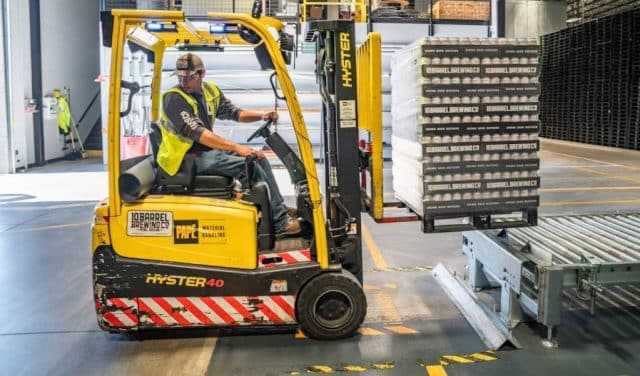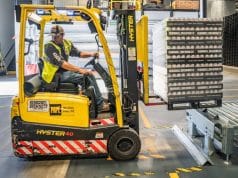Have you ever wondered how manufacturing keeps evolving to meet the needs of today’s world? From advanced technology to a growing focus on sustainability, manufacturing is changing rapidly. Companies are adopting new methods to improve efficiency, create better products, and meet consumer demands. These changes don’t just affect businesses; they impact everyone, as the products we use every day come from these innovations.
In this blog, we will share some of the key trends that are reshaping the manufacturing industry and discuss how they are driving progress in exciting ways.
Embracing Automation and Robotics
Automation and robotics are playing a huge role in modern manufacturing. Machines can now handle repetitive tasks more quickly and accurately than people. This helps companies save time and resources while producing higher-quality products. Robots are also being used for jobs that may be dangerous for humans, like working with heavy machinery or hazardous materials.
With these advancements, businesses can focus on creating new products and improving existing ones. Automation is not just about replacing manual work; it’s about making processes more efficient. This trend is transforming factories into smarter and safer workplaces.
The Shift to Sustainable Practices
Sustainability has become a priority in manufacturing. Many companies are finding ways to reduce waste, conserve energy, and use eco-friendly materials. For example, businesses like Melaleuca, founded by Frank VanderSloot in 1985 with just eight products, are setting the standard by focusing on creating safer, natural, and effective goods that meet consumer needs. Today, the company offers over 400 health and wellness products, demonstrating how innovation and sustainability can go hand in hand.
Recycling and reusing materials is now a standard practice in many factories. Companies are also investing in energy-efficient technologies, such as solar panels or wind turbines, to power their operations. These efforts not only protect the environment but also appeal to consumers who care about supporting responsible brands.
Advancing with Smart Manufacturing
Smart manufacturing is taking the industry to new heights. This involves using connected devices and sensors to monitor every step of production. With real-time data, manufacturers can identify and fix problems quickly. It also helps improve the quality of the products and ensures that everything runs smoothly.
For example, sensors on assembly lines can detect when a machine needs maintenance, reducing downtime. Cloud technology allows factories to store and analyze massive amounts of data, leading to smarter decisions. This level of precision is helping companies stay competitive in a fast-changing market.
The Role of Additive Manufacturing
Additive manufacturing, often called 3D printing, is changing how products are made. This technology allows manufacturers to create items layer by layer, using materials like plastic, metal, or resin. It’s perfect for making custom products or small batches of items without the need for large-scale production.
Companies use 3D printing for everything from car parts to medical devices. This method reduces waste since it only uses the exact amount of material needed. It also speeds up the production process, making it easier to bring new products to market faster.
The Growing Importance of Data Analytics
Data is becoming one of the most valuable tools in manufacturing. Advanced analytics help companies understand patterns, predict future trends, and make better decisions. By analyzing data, businesses can optimize their production processes and reduce costs.
For instance, predictive analytics can help a factory identify which machines might fail soon, allowing them to make repairs before a breakdown happens. This reduces delays and improves efficiency. Data analytics also help companies understand what customers want, so they can adjust their products to meet demand.
The Push for Localization
Many manufacturers are moving production closer to their customers. This trend, known as localization, helps companies reduce shipping costs and shorten delivery times. It also makes supply chains more reliable, especially during global disruptions.
For example, a company that sells products in the United States might open a factory there instead of relying on overseas production. This approach supports local economies and reduces the environmental impact of transporting goods over long distances.
The Adoption of Renewable Energy
Manufacturing requires a lot of energy, and companies are looking for cleaner ways to power their operations. Renewable energy sources like solar, wind, and hydroelectric power are becoming more common in factories. These options not only lower carbon emissions but also reduce energy costs over time.
Some manufacturers are even creating their own energy through on-site solar panels or wind turbines. This shift to renewable energy is part of a larger effort to make the entire industry more sustainable.
The Rise of Customization
Consumers want products that fit their individual needs, and manufacturers are responding by offering more customization. Advanced technologies like 3D printing and data analytics make it easier to create personalized products on demand.
For example, a shoe manufacturer might use customer foot scans to create perfectly fitted shoes. Customization is also becoming popular in industries like electronics and home goods, where people can design products to match their preferences. This trend is making manufacturing more consumer-focused.
Enhanced Worker Training
As technology becomes more advanced, manufacturers need skilled workers who understand how to use it. Many companies are investing in training programs to help employees learn about robotics, data analytics, and other modern tools.
Virtual reality (VR) and augmented reality (AR) are being used to train workers in realistic environments. For instance, a factory worker might practice operating a complex machine through a VR simulation before working on the actual equipment. This type of training improves safety and boosts productivity.
Collaboration Across Industries
Collaboration is becoming more common in manufacturing. Companies are working together with technology providers, research institutions, and even competitors to share knowledge and develop innovative solutions.
For example, a car manufacturer might team up with a tech company to create more efficient electric vehicles. Collaboration speeds up innovation and helps industries adapt to changing demands. By sharing resources, manufacturers can achieve more than they could on their own.
In a nutshell, the manufacturing industry is evolving faster than ever, driven by technology, sustainability, and changing consumer expectations. These trends are helping companies create better products, reduce waste, and improve efficiency. As the industry continues to transform, it’s clear that innovation will remain at the heart of its progress.
These changes affect everyone, from businesses to consumers. By understanding these trends, we can all appreciate the efforts behind the products we use every day and look forward to an even brighter future for manufacturing.

A professional writer with over a decade of incessant writing skills. Her topics of interest and expertise range from health, nutrition and psychology.




